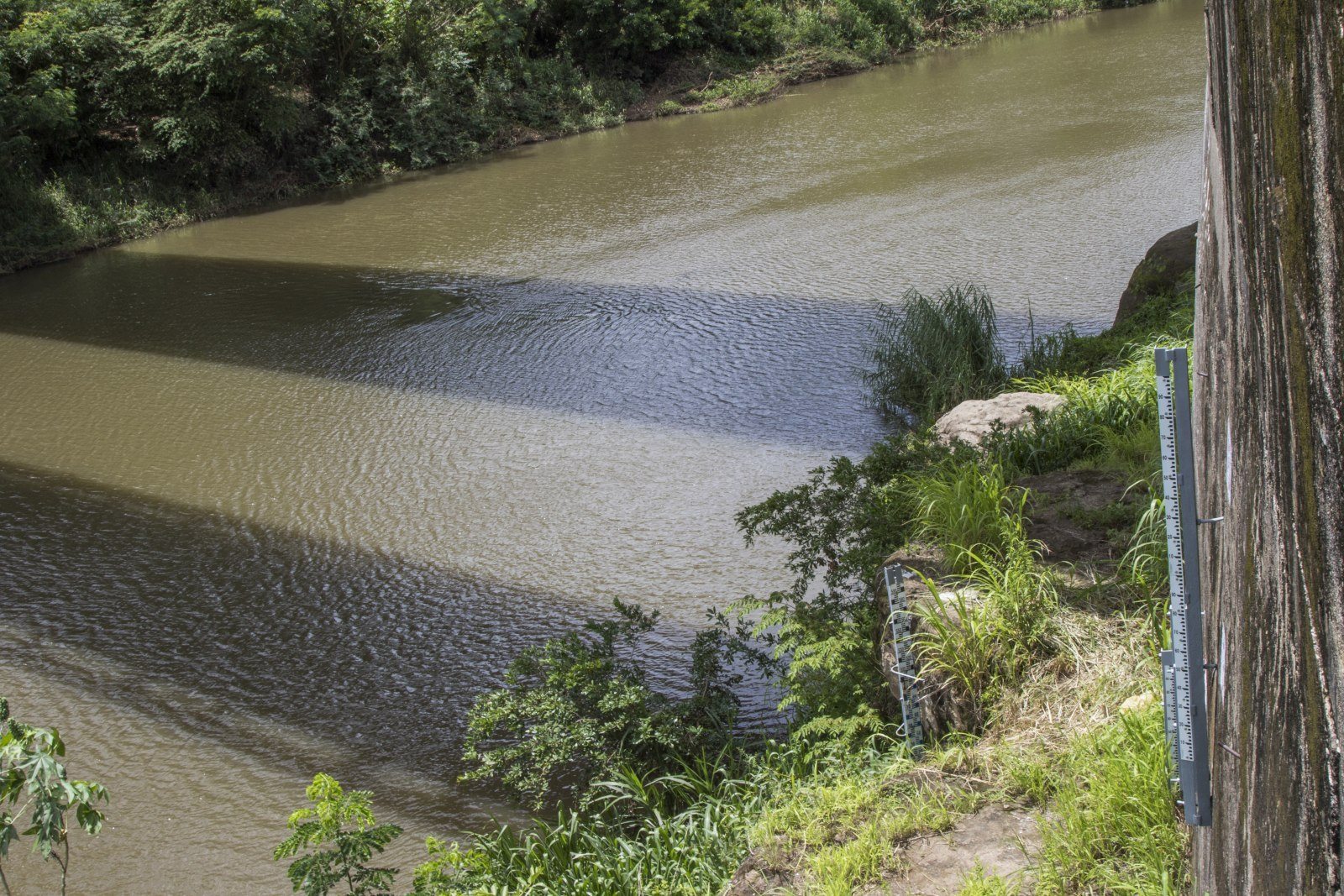
“This stench has always been…” says Victor Baltondano, who has worked in Tamarindo for more than 30 years. He points to greenish waste water seeping out of a sewer onto the sand.
He speaks as if he were an expert on the matter. “It’s untreated waste water, and it pollutes the river and heads out to sea,” he says.
Baltonado describes with precision the main problem that the community complains about and that he still doesn’t have an immediate solution to.
There has been evidence of poor waste water management in Tamarindo since 2007. That’s when the beach lost its ecological blue flag for the second time. The first time was in 2004. The flag certifies the beach as a place apt for recreation. It lost all the points in the waste water management category, environmental education programs and security. Tamarindo failed in seawater quality, where it earned 17 of 35 points possible.
Twelve years later, Tamarindo still hasn’t regained its flag and the water is still of poor quality. According to the national water laboratory, the fecal coliform bacteria in the water was passed its maximum allowed limit of 240 per 100,000 milliliters of water in five of the most recent tests.
Fecal coliform is a bacteria present in large quantities in feces. Its presence in water or food is a sign of fecal contamination, which risks spreading illness.
Although the beach is apt for swimming, it faces a risk of being polluted in the coming years and affecting tourism,” said Darner Mora, director of the national water lab at the national sewer and aqueduct institute.
The institute also identified pollution peaks from 2010 through now in rivers, estuaries and streams. The estuary at the entrance of Tamarindo is the most critical point for pollution. At times, pollution is 100 times greater than what is allowed (which is 1,000 fecal coliforms per 100 milliliters of water).
Mora is emphatic in that which happens in Tamarindo has nothing to do with the quality of water that residents drink and only affects environmental water.
Controls and droppers
The Ministry of Health created a list for The Voice of Guanacaste which stated that in the last five years, they have issued 27 health violation orders to fix the problem in the coastal community. All of them except for two have been fixed 100% by those responsible.
But prior that, in 2007 alone, when Tamarindo lost its blue flag, the ministry issued 80 health violation orders, according to Tamarindo Development Association president Urs Schmid, who made the statement during negotiations in May.

The municipality and the council of Santa Cruz have a sanitary order from the Ministry of Health for a sewer that is collecting sewage and has access to the beach in Tamarindo. According to the ministry, the City has to build a new sewer.
So, if there are more orders, are we better off? Santa Cruz Health Department director Warren Chavarría says the reduction in the number of orders is due to the lack of personnel at the ministry to deal with the situation.
According to Chavarría, having a reduced payroll means orders mostly respond to citizen complaints and not direct orders from the ministry, for example. He said that the problem gets worse when the population doesn’t use the official channels to complain.
Sometimes we can’t even prove the complaint. We go to the establishment and its closed, for example, and that doesn’t mean the complaint is fake. We have a lot of work and we prioritize and try to find an immediate solution,” the director said.
The Solution
The panorama for Tamarindo is complicated if you consider that the hotel and commercial infrastructure visitors and population have grown. The ADI estimates that there were 3,500 people living in the community in 2000 and now there are 7,600 not counting visitors. With visitors the number reachers 100,000 people per year.
For everyone involved in the district, the most promising project to deal with the problem is building a sewer of water treatment plant.
AyA executive president Yamileth Astorga said that a bidding process is open to hire out the diagnostic studies, factibiltie studies and final design for the project. The study takes 15 months once it is awarded to the company.
“We want to have a more exact budget with the study that tells us how much it will cost, but we estimate that the cost of the project could be more than $25 million and we will have to seek out financing sources.”
AyA’s project isn’t the only one. For Hernan Imhoff, president of the Tamarindo Chamber of Commerce, the solution should come from the community.
He gives the example of last year, when they won a star on the blue flag for the community, certifying the efforts to preserve the natural resources in one place even though they still aren’t able to recover the beach.
“There’s still a lot left to do, but I think that it’s possible for several organizations to get involved to put the house in order.”







Comments